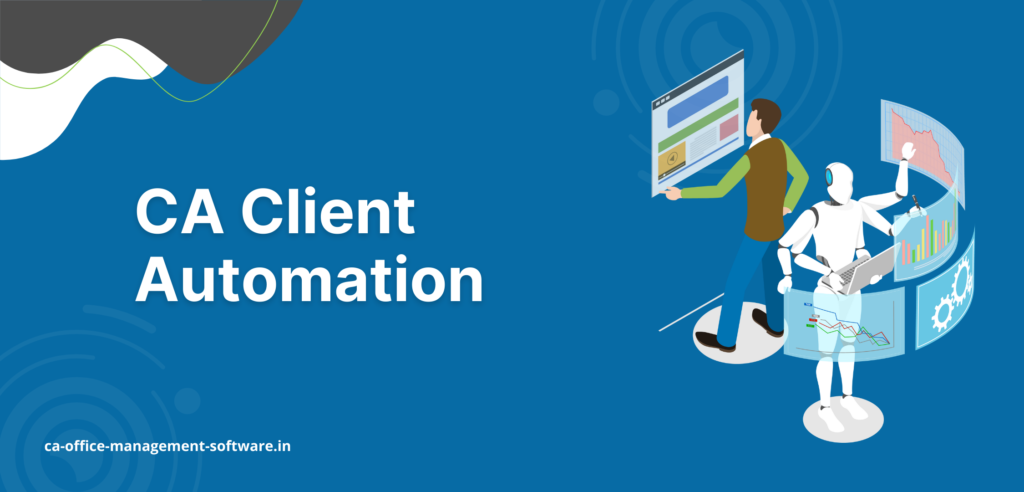Title: Streamlining Success: The Power of CA Client Automation
Introduction
Certified Accountants (CAs) play a pivotal role in managing financial affairs, tax compliance, and providing invaluable advice to individuals and businesses. In an era defined by technological advancements and automation, CA firms are increasingly turning to client automation to enhance their efficiency and deliver top-notch services. This blog explores the transformative impact of CA client automation and how it’s reshaping the accounting landscape.
The Complexities of Client Management in Accounting
Client management is at the heart of every CA firm’s success. It involves a multitude of tasks, including client onboarding, data collection, document management, compliance tracking, communication, and more. Traditionally, these processes were often manual and time-consuming, leaving little room for CAs to focus on strategic financial analysis and value-added services. Client automation aims to change that.
The Benefits of CA Client Automation
- Efficient Onboarding: Automation streamlines the onboarding process, allowing clients to provide necessary information and documents electronically. This reduces paperwork and accelerates the initiation of financial services.
- Data Collection and Organization: Automation tools can collect financial data from various sources, organize it systematically, and update it in real-time. This minimizes the chances of errors and ensures data accuracy.
- Compliance Made Easy: Automated compliance tracking keeps tabs on important deadlines, ensuring that clients meet all their tax and regulatory obligations. This feature is particularly crucial in tax season.
- Client Communication: Automated communication tools enable firms to send personalized updates, reminders, and financial reports to clients, enhancing client engagement and satisfaction.
- Document Management: Robust document management systems help organize, secure, and retrieve client documents efficiently, reducing the risk of losing critical information.
- Scalability: Automation can handle a growing number of clients without a proportional increase in administrative workload, making it easier to scale your CA practice.
- Data Security: Automated systems often come with robust security features, ensuring that sensitive financial data is protected from unauthorized access.
Key Features of CA Client Automation
When implementing CA client automation, consider these essential features:
- Client Portals: Secure online portals for clients to access their financial documents, reports, and communicate with your firm.
- Workflow Automation: Tools to automate repetitive tasks such as data entry, scheduling, and sending reminders.
- Integration: Compatibility with accounting software, tax preparation tools, and financial reporting systems for seamless data flow.
- Data Analytics: Advanced analytics to gain insights from financial data, helping you provide more strategic advice to your clients.
- AI-Powered Insights: Utilizing artificial intelligence and machine learning for trend analysis and financial forecasting.
Conclusion
In the fast-evolving world of accounting, CA client automation is not just a convenience—it’s a necessity. By automating routine tasks and streamlining client management processes, CAs can shift their focus from administrative chores to providing high-value financial advice and analysis. This not only improves client satisfaction but also enhances the firm’s overall efficiency and profitability.
As technology continues to advance, embracing CA client automation is the path forward for accounting professionals. It’s a strategic move that can position your CA firm at the forefront of the industry, allowing you to better serve your clients and navigate the complex financial landscape with confidence.


